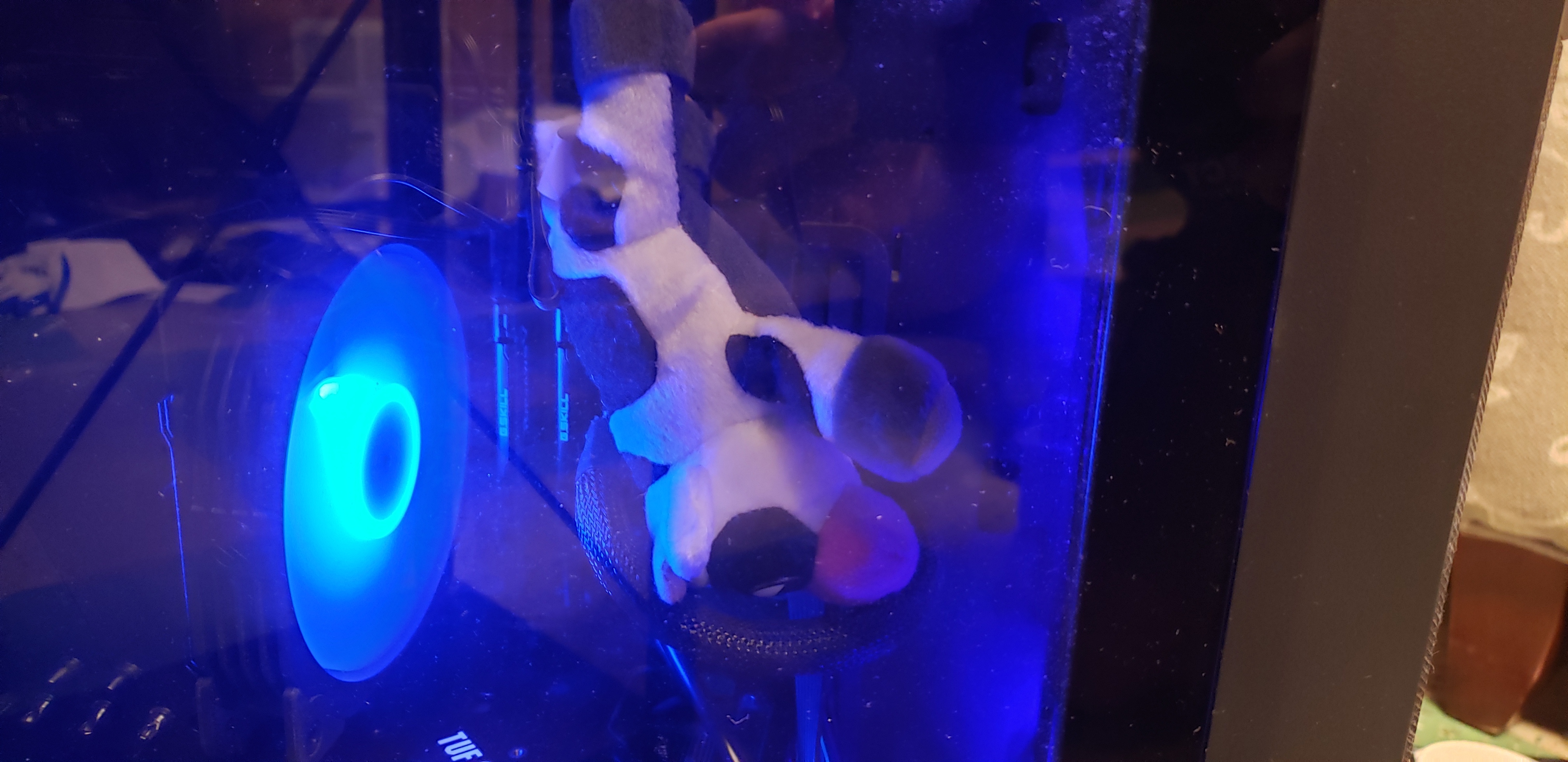I am shocked by this - the quote in below is very concerning:
“However, in 2024, the situation changed: balenaEtcher started sharing the file name of the image and the model of the USB stick with the Balena company and possibly with third parties.”
Can’t see myself using this software anymore…
Is no one aware of Fedora Media Writer? It’s FOSS and the most trustworthy ISO burning software in existence. It’s only issue is that its named as if it is written only for producing Fedora bootable media. It works for everything.
Opensuse has one too. And dd exists for the brave or the foolish
The article at the end mentions they suggest dd as alternative for MacOS (due to Unix user space). It seems the balena -> rufus decision is about the easiest-onramp Mac+Win-portable option, for those uncomfortable dropping to low-level device-writing CLI tools in their current system.
Side-note: Last time I was on a friend’s Windows I installed dd simply enough both as mingw-w64 (native compiled) and under Cygwin. So for Windows users who are comfortable using dd it only requires a minor step. When I once used WSL devices were accessible too, but that was WSL1 (containerized), whereas WSL2 (virtualized) probably makes device-mapping complex(?) enough to not be worth it there.
WSL2 has relatively easy (a few powershell commands iirc) device mounting, provided you aren’t trying to mount C: or the windows install drive (not necessarily the same).
Thanks, that’s good to know, but for raw-writing a bootable image to a device do you (or anyone reading) know if there are also straightforward powershell commands for mapping devices at the block level? (as opposed to mounting at filesystem level)
Meh i find it slow.
I dunno… I just use dd.
cat works perfectly fine too 👌
Eh, I prefer being able to specify block sizes, to maximize the throughput.
Seeing progress, too
balenaEtcher never worked for me. No image that I flashed has been usable to boot. The RPi imager has been working flawlessly
dd
It is indeed the best way, but somehow I am still anxious using this command, even after flashing countless USB drives 😅
I’ve made it a habit to type out the command without sudo at first, then when it yells at me about permissions I am reminded to go back and double-check.
Never understood why you would use anything else. It’s in coreutils!!!
There are people coming from Windows, which does not have
dd.“just” setting that up takes much longer than installing a small app to do it.
OK so keep using the small app that is reporting your usage activity
Or just dont use windows
J think the best solution for window$ ppl is Rufus?
Because GNU dd-rescue exists
Many won’t touch the command line.
I know, but just because someone doesn’t understand something or ignores it doesn’t mean it isn’t the best/simplest choice for 90% of cases.
It’s faster to drag and drop a downloaded ISO and choose the target from a dropdown, than do it on a command line. And get a progress bar. As much as command line is usually faster, it isn’t in this case.
Yes you can also get a progress bar on the command line but it’s more typing again, and realistically you need to look the option up every time if you use dd once every 3 months.
Lmao. Uses a computer, typing is too much. It took more typing to write your comment than to craft a tab-completed dd command, even if you had to call the help menu to refresh your available options, jus’ sayin’
I get it though, the general public are scared of the big bad 'puter magic and need GUIs.
Tab complete? Just ^R that shit!
Shhh, that’s too advanced. Besides, CLI is outdated and slower than GUIs, this is just insane behavior /s
I honestly didn’t even need to specify tab-completed. It’s still less typing than their comment unless your paths are miles long.
Let me try: Lmao. Uses a computer, still does stuff the slower way because learning new things is too difficult.
To be serious, I am looking for the best solutions for my use cases, not adequate ones. Yes dd works perfectly fine and as you noted doesn’t take long to use anyway. But just because it’s fine doesn’t mean other approaches aren’t better.
A GUI tool can offer or take a list of download URLs for common distros so downloading isn’t a separate step, it can check if the target device is a flash drive and not a hard drive by mistake, it can automatically choose the optimal block size for the device, it can verify the process by reading it back from the device, can show you the current filesystem, label, and usage of the target device to confirm, it can handle flashing to multiple devices at the same time with separate and total progress bars.
If I wanted to do all that on the command line it’d be quite a lot of commands or a sizeable script to write. Or I can use a simple dd command and lose out on all of the above. Either way it’s a worse option. I will only use dd when a GUI tool isn’t installed, or when I’m on a system without a DE.
what is a good one to use, is there something like rufus on linux
Can always use dd but I always go stupid when I need to set boot flags and all that crap, which is so much easier with etcher. I think I’ve done dd with gparted in the past.
does gparted set the correct flags too, can it also do windows
i just want a dumb ui i can dumbly drag the iso file to and it takes care of everything for me.
i’ve never needed to set a single flag with dd. i just do
if=the_iso of=the_disk. what flags?Don’t you need to mark usb disks as bootable if you want to boot from them to install Linux or whatever
i think it depends on the image you get - for archlinux you can simply cat (or dd) the file onto a usb stick and it works perfectly fine, bootable. but i think i have seen an image at some point where it didn’t work, but i don’t recall what it was.
that’s not something i’ve ever had to do, i’ve only done that for hard drives.
https://circle.gnome.org/? Never tried their ISO software, I just use dd.
I just use Gnome Disks for convenience over dd.
I tried belenaEtcher once on my Mac… And it seemed to me more like a spyware than an actual software, I was a bit confused and never used it again.
Ahh too bad because balenaEtcher just werks for me.
If you actually read the post, you would have known, it does work, but there are some privacy concerns with it:
“However, in 2024, the situation changed: balenaEtcher started sharing the file name of the image and the model of the USB stick with the Balena company and possibly with third parties.”
If you need a FOSS, cross platform GUI for bootable USB sticks, Raspberry Pi Imager is a really good solution.
It is mainly used to flash SD cards for RPIs, but also you can burn any ISO on any support with it.I used to use the fedora media writer but the RPi imager software is so easy I switched
Linux mint factory USB creator just right click and make bootable.
Friendship ended with Balena
Now Rufus is my new best friend
Balenaetcher has, for me at least, failed to write to USBs for the last 3 years or so that I’ve tried to use it - meanwhile random iso writers from flatpak have been more reliable for me. Very obnoxious that so many iso related sites recommend it. Rufus, kicks tons of ass, if for whatever reason you’re still on windows.
Also on most distros I’ve tried, the disk utility has some sort of right click or context menu that gets you a ‘restore disk image’ button that works great as well.
Flatpack? You are using Linux and you need “iso writers”? Is your dd broken, son?
This sounded like a techy Ron Swanson.
Are the scissors broken in your house, son?
At least one person got the reference!
😂 I also read this as Ron’s voice!
Nah as much as i love doing stuff via terminal, I am extra paranoid specifically about writing to the wrong device and losing data; I prefer as many confirmations as possible that I’m writing to the correct drive, and graphical installers tend to give me just a few more reassurances. A few examples would be stuff like
- a graphical representation of partitions (the general layout of a drive tends to offer an easy ‘fingerprint’ in my mind; like the pattern of partitions help me confirm I’m looking at, say, a Debian install USB compared to a single-partition general purpose storage disk)
- icons for different types of devices, like an SD card, USB, or hard disk icon
- confirmation dialogues summarizing what device is targeted, and what all will be performed
I’m also the kind of person who stares at a written email worrying about every last nuance of my phrasing, so 🤷♂️😂 definitely a me problem, I think!
What options are there for flashing to SD cards? Something that works on Mac too would be nice. A gui is preferred.
Plug your usb drive in and run lsblk to figure out which letter to use instead of x in /dev/sdx
sudo dd if=image.iso of=/dev/sdx bs=1M status=progress
EDIT: I totally didn’t read your request. This is not gui or Mac based, but it still might help someone.
Mac should have dd,
I’d assume lsblk as wellnot lsblk though. There’s fdisk thoughI’m pretty sure mac, being based off freebsd, would include dd
The comment said “SD Card” so it would be
/dev/mmcblk*I use a microSD to usb adapter and have 2 spinning rust disks. So it’s /sdc for me, but i still always double check. Dd isn’t called the disk destroyer for nothing.
i still don’t understand why anyone would use etcher. it’s an electron wrapper over
dd. it’s 80MB where rufus is 1.5. when it appeared there were already other programs that did its job better.I used it because that’s what the instructions on the Linux Mint website for creating a bootable USB stick from Windows say to do.
I have no clue what “electron wrapper”, “dd”, or “rufus” are. I’m trying to learn more, but can’t learn it all in one day.
weird that the installation guide is hosted on a separate website that hasn’t been updated in eight years. that’s irresponsible of them. anyway rufus is a better version of etcher that you can download for windows.
I’ve typically used Etcher when I have to write an ISO on Windows
use rufus.
Rufus seems to be just for Windows and dd does not have a gui
that’s correct. on windows, rufus is a better tool, and on linux or mac it’s just a built-in command with a manual packed in.
also, ubuntu ships with startup image creator, and gnome disks ships as a flatpak, if those are more your speed.
Thanks for the info, I’m on linux mint and after checking these out it isn’t immediately apparent from their websites whether or how I could install them. Still think etcher occupies a niche that alternatives don’t fill, its website directs you straight to installing it, it’s cross platform, and using it is very easy, so it’s something that could reasonably be linked to in various install tutorials.
I like clicking buttons that have a text on them saying what they do instead of trying to memorize a gajillion terminal commands and flags where I have to enter more commands and flags to see what they do.
use rufus.
On Windows, Rufus is just as easy to use tho. And on Linux, there is Gnome Disks.
plus it’s some some sanity checks like not showing you your system drives. Or warning you when the drive you are about to nuke is suspiciously large and maybe not the usb drive you actually want to use.
This is basically the main feature. Stopping you from fatfingering the wrong drive
i still had issues using 150MB electron based bloated and heavy software instead of rufus, not that it worked for me anyway
I only tried to use it once, and same. 150MB of a Web app to copy an ISO? I think I was using a Macbook to flash it and decided to use ventoy instead, with my PC.
I understand that it needed a GUI, but 150 megs?? When :
~ ❯ ll `which dd` -rwxr-xr-x 1 root root 63K Sep 29 16:36 /usr/bin/dd* ~ ❯
…and that’s how I met your
motherforkJust use
dd. It’s not that hard. You pass it 2 arguments:if=the file you want to flash, andof=the destination. If you’re feeling fancy, pass in somestatus=progress. And don’t forget to prepend it withsudo. That’s it.I just tried this the other day and was unable to boot from the USB. any chance you could shed some light on what i might have screwed up?
The command was:
dd if=fedora.iso of=/dev/sdc bs=4M status=progressThe USB stick was not mounted and the fedora image was verified. The command completed successfully but I couldn’t boot from it. When I used fedora writer to burn the same image to the same USB stick it booted no problem.
Edit: spelling
Did you make sure that the
ofis correct?lsblkto make sure.If your sure it wrote to the right drive i would make sure that you have a good download. Did you run your checksums?
I think fedora works with secureboot but you might want to disable it just to see if that is the issue. I believe you can reenable it after install.
Make sure to go into the bios and boot from external drive/usb.
Out of 15 years of using
ddi have never had a problem.I did verify with
lsblk, with a listing before and after plugging in the stick to be absolutely sure.I also did verify the checksum of the ISO.
I’ll double check SecureBoot, but as I mentioned, the same ISO written to the same stick with Fedora writer did boot in the same machine it wouldn’t boot from with the
ddversion.I know it’s something I did or didn’t do to make it work correctly, so this is not me trying to dunk on
dd, just trying to understand what I did wrong.
Don’t use Fedora myself, but it may not be a hybrid ISO that becomes bootable when written… so I looked and you are missing a flag
dd if=/path/to/image.iso of=/dev/sdX bs=8M status=progress oflag=direct
From https://docs.fedoraproject.org/en-US/quick-docs/creating-and-using-a-live-installation-image/
I don’t think
oflags=directhas any influence on the result. Apparently that’s about disabling the page cache in the kernel, which can avoid a situation in which the system slows down due to buildup yet-to-write pages.Perhaps not. But the flag allows for direct I/O for data, bypassing buffers which can be overrun with certain size blocks, potentially causing dirty buffer depending on the machine being used. My understanding is that it’s “more reliable” for writing (especially on shitty USB Flash drives) and getting the exact ISO properly written.
But it could be useless all the same - I’m just pointing out that OPs command is not the one recommended by Fedora when writing their ISO. Also OP is less likely to pull the drive before buffers have flushed this way.
Oh yeah that’s where I was getting at, but I didn’t have time to write that out earlier. I agree that OP probably pulled out the usb stick before buffers were flushed. I imagine that direct I/O would mitigate this problem a lot because presumably whatever buffers still exist (there would some hardware buffers and I think Linux kernel I/O buffers) will be minimal compared to the potentially large amount of dirty pages one might accumulate using normal cached writes. So I imagine those buffers would be empty very shortly (less than one second maybe?) after dd finishes, whereas I’ve seen regular dd finish tens of seconds before my usb stick stopped blinking it’s LED. Still if you wait for that long the result will be the same.
Ah! Thank you! I knew it was something I screwed up!
You didn’t screw up, you beautifully proved why the CLI is never a simple solution.
This is why people trying to pass this as a primary option baffle me a bit. dd is not that bad in isolation, but all of these little commands add up.
If we want Linux to be mainstream, we need to accept that most users aren’t going to be linux enthusiasts. They just want a PC that works normally.





















